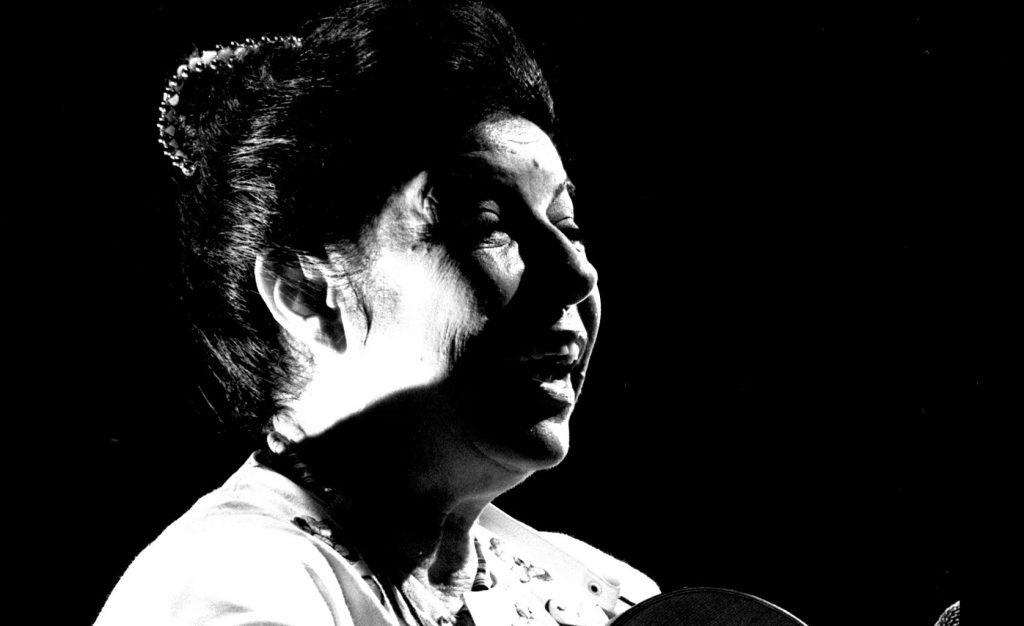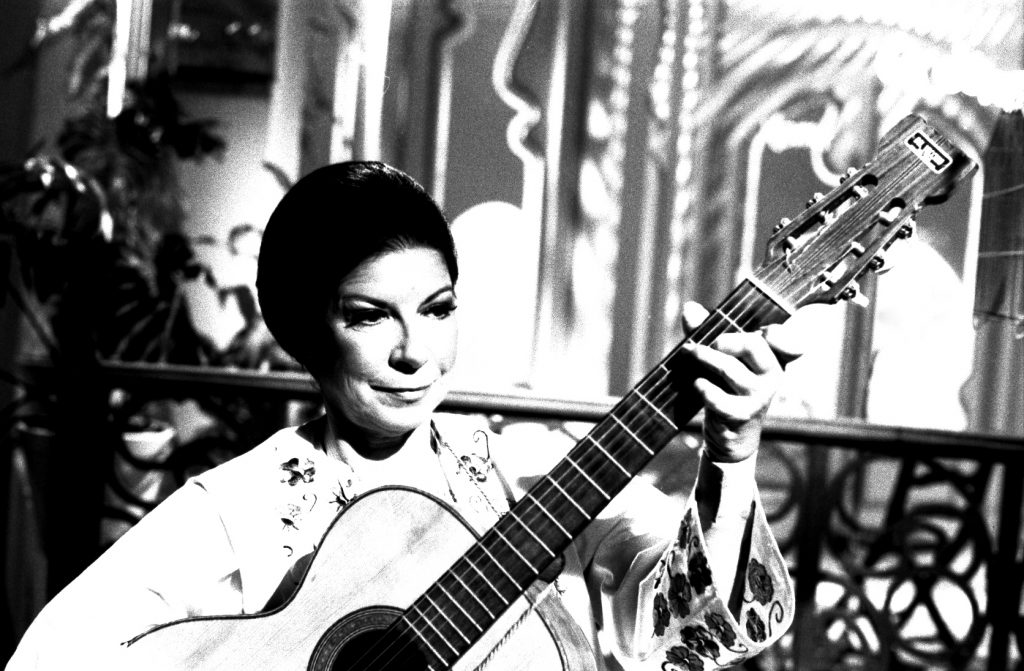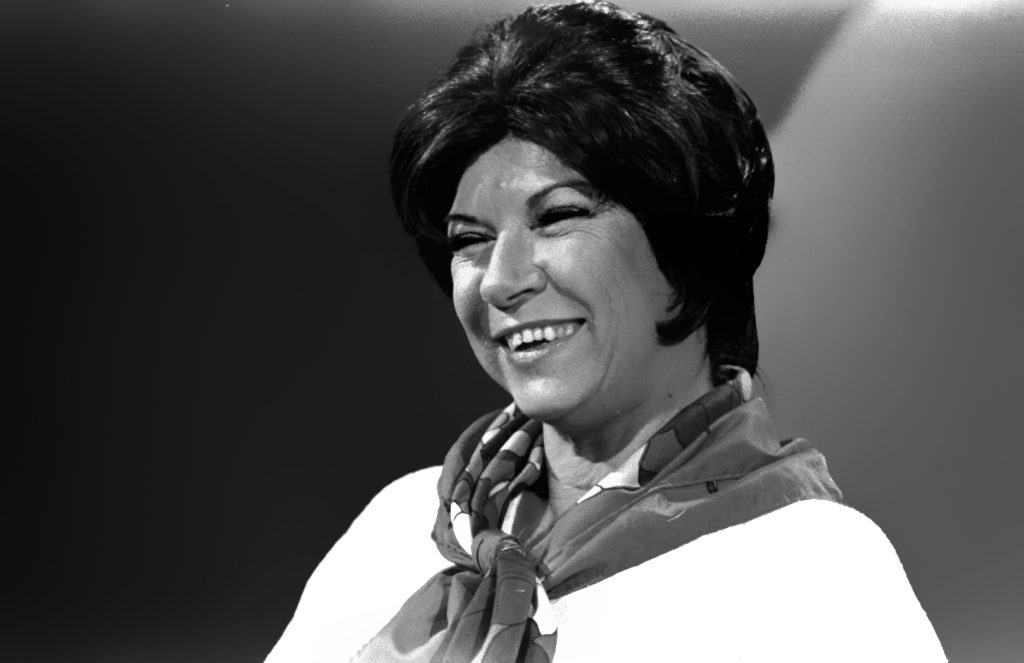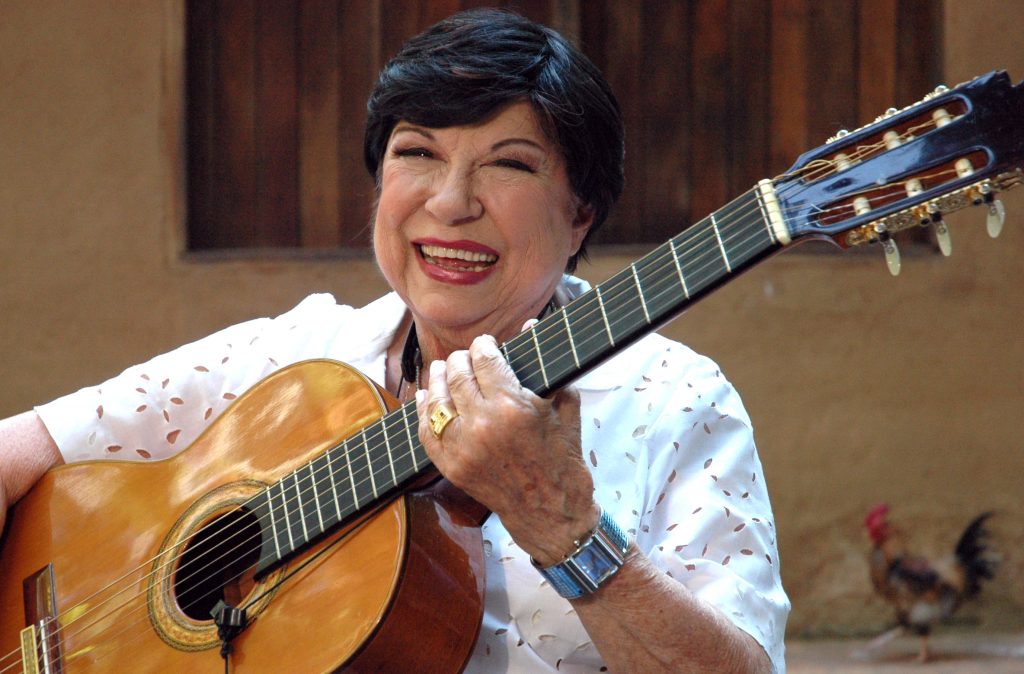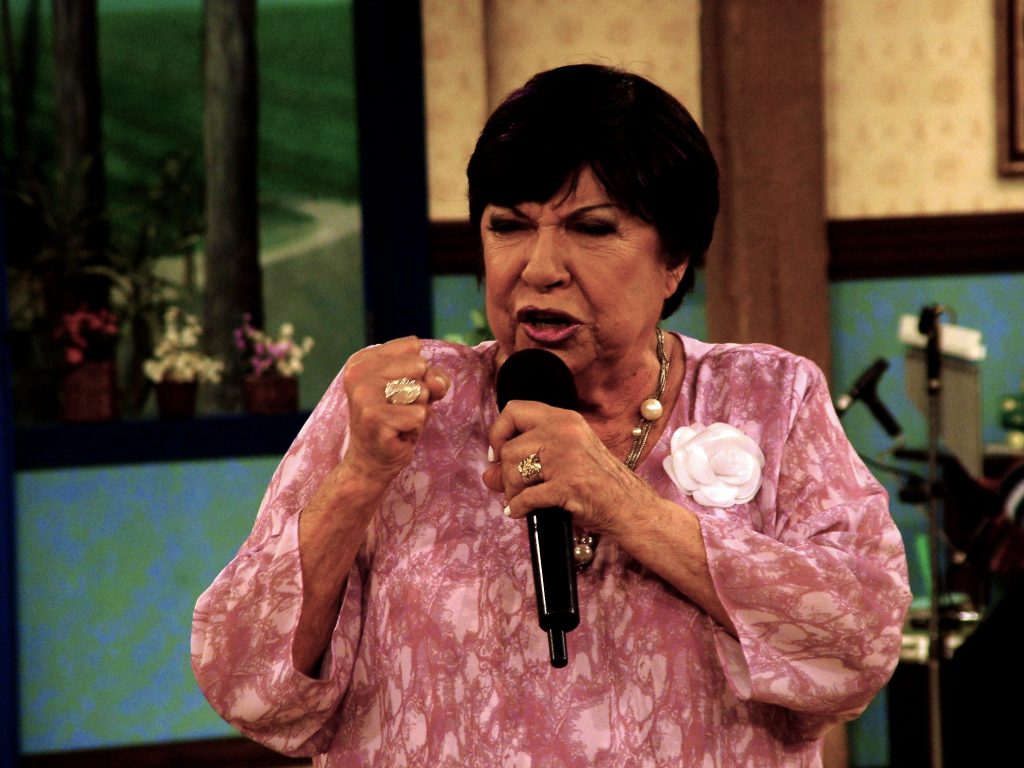
A legacy
Inezita died on March 8, 2015, a Sunday, the day of the Viola, Minha Viola. She had left the leadership of the show only three months before. Her career lasted for more than 60 years, as a researcher, presenter, instrumentalist, teacher, actress, radio broadcaster and, most of all, singer. Her story in the music world fills up with more than 80 albums, besides a huge contribution, difficult to measure in what regards the space dedicated to “caipira” and folk music for more than 35 years, in a weekly basis production in open TV station.
In the movies, she acted in five, including the first Brazilian colored one, Destino em Apuros (1953). Her career provided important awards such as Prêmio Saci de Cinema, not to mention being awarded seven times Prêmio Roquette Pinto as best radio singer. Away from the media in a reclusion period, she gave not only guitar lessons, but also made researches on Brazilian folk music and began to teach in universities.
More than a physical legacy, based on her production, Inezita became a reference to “caipira” music and culture, to the folk culture, to the academy and to women. In an interview to this exhibition, her daughter Marta Barroso said: “She was always like that, someone who though out of the box; she did things women of that time would never do”. In a scene where being a woman could limit and determine her place and obligations, Inezita ignored it and this would not limit what she wanted to do.
